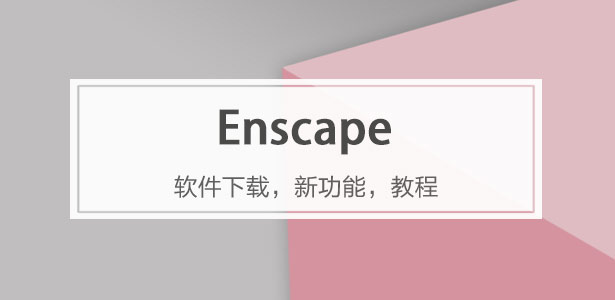
下載app免費(fèi)領(lǐng)取會(huì)員






設(shè)計(jì)單位? Herzog & de Meuron
項(xiàng)目地點(diǎn)? 瑞士阿爾施維爾
建成時(shí)間? 2025年
建筑面積? 14100平方米
本文英文原文由Herzog & de Meuron提供,由有方編譯。
瑞士創(chuàng)新園位于阿爾施維爾,是生命科學(xué)企業(yè)的聚集地,如今正持續(xù)擴(kuò)展。可持續(xù)辦公樓Hortus為落戶巴塞爾都市圈的新一代科技公司打造了現(xiàn)代化、靈活的工作環(huán)境。項(xiàng)目委托方Senn希望Herzog & de Meuron設(shè)計(jì)一座以可再生、可回收建筑材料的、具有極致可持續(xù)性的辦公樓。
The Switzerland Innovation Park, Allschwil, home to life sciences enterprises, continues to grow. The sustainable Hortus office building creates a modern and flexible working environment for a new generation of technology companies that are settling in the Basel metropolitan region. Our client, Senn, commissioned us to design a radically sustainable office building made of renewable and recyclable building materials.



這一愿景開(kāi)啟了一段設(shè)計(jì)旅程,目標(biāo)是在施工階段最大程度降低灰色能源消耗,在運(yùn)營(yíng)階段實(shí)現(xiàn)能源最優(yōu)化,并實(shí)現(xiàn)能源自給自足。建成31年后,這座擁有約600個(gè)工作崗位的建筑將完全抵消其建造過(guò)程中所消耗的能源。設(shè)計(jì)團(tuán)隊(duì)與Senn及一支經(jīng)驗(yàn)豐富的專業(yè)顧問(wèn)團(tuán)隊(duì)合作,使這棟建筑成為德語(yǔ)區(qū)最可持續(xù)的辦公樓之一。
The brief initiated a design process aimed at combining the lowest possible grey energy during construction, an energy-optimized concept during operation, and a surplus of self-generated energy. After 31 years, the building, which has around 600 workplaces, will have fully offset the energy used during its construction. Our collaboration with Senn and a team of experienced specialist planners has resulted in one of the most sustainable office buildings in the German-speaking world.



中庭如綠洲
Atrium as Green Oasis
該建筑圍繞一個(gè)綠色中庭而建,它架空于地面之上,似乎輕輕漂浮。四層高的木結(jié)構(gòu)體系配有夯土樓板,南側(cè)開(kāi)敞的通道通向由景觀設(shè)計(jì)師Piet Oudolf設(shè)計(jì)的花園。
The building wraps around a green atrium. It stands on stilts, floating slightly above the ground. The four-storey timber-frame construction with rammed-earth ceilings opens to a wide passageway in the south that leads to a garden designed by landscape architect Piet Oudolf.


高大的灌木、草本植物、開(kāi)花多年生植物和庭院立面上的攀援植物,沿著彎曲的礫石小徑,組成了茂密的綠植。花園下方是一個(gè)雨水收集池,用于植物灌溉和衛(wèi)生設(shè)施用水。
Tall shrubs, grasses, flowering perennials, and climbing plants on the courtyard fa?ades provide dense greenery along a curved gravel path. Underneath the garden is a rainwater collection tank that is used for watering the plants and for the sanitary facilities.


設(shè)有帶頂棚木制廊道的中庭,為員工和訪客提供了一個(gè)放松休憩的空間。除可供外部租用的多功能會(huì)議室外,首層還配有餐廳、帶咖啡吧的健身房,以及可供公眾使用的座位區(qū)。
The atrium, with its covered wooden veranda, serves as a recreational area for employees and visitors to take a break. In addition to other meeting rooms available for external parties to rent, the ground floor provides a restaurant, a gym with a café bar, and seating niches for the public.



協(xié)作式使用
Collaborative Use
建筑上部四層為開(kāi)放式平面,約1萬(wàn)平方米的辦公空間鼓勵(lì)員工互動(dòng)與交流。開(kāi)放式布局為辦公方式的多樣性與靈活性提供了可能。
The open plans of the four upper floors, which offer approximately 10,000 m2 of office space, encourage employee engagement and exchange. The open layouts allow for flexibility and variety in use.




根據(jù)不同需求,團(tuán)隊(duì)可選擇室內(nèi)或廊道上的開(kāi)敞或半私密座位區(qū)域,一些區(qū)域與其他用戶共享。每層配有公共休息區(qū)和小廚房,首層及朝南公園一側(cè)的廊道對(duì)所有訪客開(kāi)放。
Depending on their needs, teams have access to protected or open seating areas of various sizes, either inside or outside on the veranda. Some areas are shared with the other users. Each floor has communal lounges and kitchenettes. The ground floor and the veranda facing south towards the park are accessible for all visitors.





循環(huán)材料
Materials in Circulation
Hortus項(xiàng)目代表了研究、技術(shù)、烏托邦,以及可持續(xù)。項(xiàng)目聚焦創(chuàng)新的可持續(xù)性理念。設(shè)計(jì)過(guò)程始于對(duì)材料的科學(xué)分析,比較其環(huán)境與物理特性,主要標(biāo)準(zhǔn)之一是它們必須是天然來(lái)源的可再生材料。按照“從搖籃到搖籃”(cradle-to-cradle)原則,所有建筑構(gòu)件都進(jìn)行了編號(hào)登記,以便未來(lái)重復(fù)利用。天花板模塊所用黏土可直接返回土壤。木材、壓制黏土、纖維素等可再生材料組成的簡(jiǎn)約材料體系,凸顯出Hortus模塊化木結(jié)構(gòu)的生態(tài)原則。采用木材連接,避免使用金屬件,使得建筑生命周期結(jié)束后可以輕松拆解、循環(huán)再用。
HORTUS stands for House of Research, Technology, Utopia, and Sustainability. It focuses on innovative sustainability concepts. The design process began with a scientific analysis of materials, in which construction materials were tested and compared based on their environmental and physical characteristics. One of the main criteria was that they be naturally sourced from renewable materials. Following the "cradle-to-cradle" principle, all building components were cataloged for future reuse. The clay from the ceiling modules can be returned directly to the ground. The reduced palette of renewable materials, including wood, compressed clay, and cellulose highlights the ecological principles of Hortus’s modular timber-frame construction. Timber joinery was employed to avoid metal connections so that, at the end of the building’s lifespan, the components can be easily dismantled and reused.


新型樓板系統(tǒng)
New Floor System
設(shè)計(jì)團(tuán)隊(duì)與ZPF工程師合作,共同開(kāi)發(fā)了一套由矩形木構(gòu)件與壓制黏土構(gòu)成的混合樓板系統(tǒng)。借助與Blumer Lehmann與Lehm Ton Erde的幫助,設(shè)計(jì)團(tuán)隊(duì)完善了天花板模塊。每個(gè)混合構(gòu)件均為預(yù)制木框架,取材于當(dāng)?shù)厣帧D玖褐g形成穹頂狀空間,填充壓制黏土。致密的黏土不僅具備防火性能,還能在夏季吸收多余的熱量。
In collaboration with ZPF Engineers, we developed a hybrid floor system consisting of rectangular timber elements and compressed clay. We perfected the ceiling modules with the help of Blumer Lehmann and Lehm Ton Erde. Each hybrid element consists of a prefabricated wooden frame made with timber harvested from nearby forests. Clay is compressed in the form of a vault between the inlaid wooden beams of the frame. The dense clay provides fire protection and serves as a thermal mass in the summer, absorbing excess heat.

樓板在本地生產(chǎn)。建筑所用黏土取自施工現(xiàn)場(chǎng),每塊樓板都在建筑旁邊的現(xiàn)場(chǎng)工廠制造。Lehm Ton Erde為Hortus特別研發(fā)了一套工藝,直接在現(xiàn)場(chǎng)生產(chǎn)黏土混合物,并將其夯實(shí)到木模塊中。與同等承載力的傳統(tǒng)混凝土樓板相比,這種黏土+木材混合樓板的碳排放減少了90%。
The floor slabs have been produced locally. The clay is excavated from the construction site, and each floor slab was manufactured in a field factory next to the building. Using a process specially developed for Hortus by Lehm Ton Erde, the clay mixture was produced directly on site and tamped into the wooden modules. The carbon emissions of the clay-timber floor system are ten times less than a conventional flat concrete floor with a comparable load capacity.


能源正效益與碳減排
Energy Positive and Carbon Reduction
項(xiàng)目設(shè)計(jì)旨在大幅降低碳足跡,并融入了整體可持續(xù)理念,遠(yuǎn)超SIA 2040等環(huán)境可持續(xù)建筑標(biāo)準(zhǔn)。緊湊的建筑體量減少了能量損耗。建筑沒(méi)有地下混凝土結(jié)構(gòu),仿佛漂浮在地貌之上。其下方空間在夏季保持涼爽,在冬季保暖。
The design aims to drastically minimize the building’s carbon footprint and incorporates a holistic sustainability concept. It substantially exceeds guidelines for environmentally sustainable buildings, such as SIA 2040. The compact building form reduces energy loss. Not having a concrete basement, the building essentially floats over the landscape. The air underneath the building is cool in the summer and warm in the winter.

結(jié)合地?zé)崮苓M(jìn)行供暖和制冷,調(diào)節(jié)室內(nèi)溫度。屋頂與護(hù)墻共約5000平方米的光伏裝置提供了可再生太陽(yáng)能,從建筑啟用第一天起便實(shí)現(xiàn)能源盈余,因此建造建筑所需的隱含能量將在31年內(nèi)完全抵消。
Together with geothermal energy for heating and cooling, it regulates the room temperature. A photovoltaic surface of approximately five thousand square meters on the roof and along the parapets provides renewable solar energy. This system generates a surplus from day one, therefore the embodied energy necessary for constructing the building will be fully amortized within 31 years.




可持續(xù)性實(shí)踐
Sustainability at Herzog & de Meuron
Herzog & de Meuron認(rèn)為,可持續(xù)性是當(dāng)代建筑行業(yè)面臨的核心挑戰(zhàn)。它不應(yīng)僅僅體現(xiàn)于建筑本身,也應(yīng)體現(xiàn)在我們的生活方式中,并注重整體性方法。目標(biāo)是實(shí)現(xiàn)環(huán)境、經(jīng)濟(jì)與社會(huì)文化三者之間的平衡。
Herzog & de Meuron understands sustainability as a key challenge of the building industry. Sustainability should be a feature not only of our built environment but also of how we live in it, with a focus on a holistic approach. The goal is to create a balance of environmental, economic, and socio-cultural conditions.

據(jù)國(guó)際能源署(IEA)與世界經(jīng)濟(jì)論壇(WEF)研究,建筑業(yè)消耗了全球約40%的原材料與能源,同時(shí)也是碳排放的主要來(lái)源之一。作為建筑師,我們認(rèn)為改變這一數(shù)據(jù)是我們的任務(wù)。如何實(shí)現(xiàn)氣候中和建筑,是一項(xiàng)建筑設(shè)計(jì)挑戰(zhàn),不僅需要環(huán)保的建造原則,也要求我們?cè)诿恳粋€(gè)具體情境中持續(xù)探索最優(yōu)解。這一過(guò)程需要高度的創(chuàng)新與以解決方案為導(dǎo)向的設(shè)計(jì),并針對(duì)不同地域、城市及文化語(yǔ)境量身定制。
According to studies by the IEA (International Energy Agency) and the WEF (World Economic Forum), the construction sector is responsible for the consumption of approximately 40 percent of all raw materials and energy and is simultaneously one of the main producers of carbon emissions worldwide. As architects, we see it as our task to influence this statistic. The question of how to plan a climate-neutral building is an architectural challenge that not only requires environmentally sound building principles but also committing to an ongoing process to find the best possible approach for each individual situation. This requires a high level of innovation and solution-oriented design, custom-tailored for each geographic, urban, and cultural context.

Hortus項(xiàng)目正是一個(gè)例證:它表明可持續(xù)建筑不僅能作為本地能源和原材料的來(lái)源,同時(shí)也可以是具備美感、健康宜居、對(duì)經(jīng)濟(jì)與環(huán)境友好、對(duì)社會(huì)有益的空間載體。
The example of Hortus demonstrates that sustainable architecture can act as a local source of energy and raw materials, while simultaneously being aesthetic, healthy to build and occupy, and useful for the economy, the environment, and our society.

設(shè)計(jì)圖紙 ▽









完整項(xiàng)目信息
PROJECT KEY DATA
Project Number: 543
Project Official Name: Hortus
Location: Allschwil, Switzerland
Project Phases
Concept Study: Apr 2020 - Oct 2020
Schematic Design: Jan 2021 - Nov 2021
Design Development: Jan 2022 - Jul 2022
Construction Documents: Aug 2022 - Jun 2023
Construction Services: Dec 2022 - May 2025
Client: Senn Resources AG, St. Gallen, Switzerland
PROJECT TEAM
Herzog & de Meuron Project Team
Partners: Jacques Herzog, Pierre de Meuron, Stefan Marbach (Partner in Charge)
Project Team: Alexander Franz (Associate), Gerald Oeckl (Project Manager (2023-2025)), Giulia Schnyder (Project Manager (2020-2022)), Viktoria Bruhs, Zuzana Chupac, Silja Ebert, Jean-Michel Jeanne, Vladislav Kostadinov, Maria Krasteva, María Niro González, Raneen Nosh, Marika Prete, David Schneider, Martin Schulte (Design Technologies), Jo?o Filipe Varandas
PLANNING
Project Architect: Herzog & de Meuron Basel Ltd, Basel, Switzerland
Structural Engineering: ZPF Ingenieure AG, Basel, Switzerland
General Planning: SENN Construction AG, St. Gallen, Switzerland
SPECIALIST / CONSULTING
Rammed Earth Consultant: Lehm Ton Erde Baukunst GmbH, Schlins, Austria
Landscape Architect (courtyard): Piet Oudolf, Hummelo, Netherlands
Landscape Architect (exterior): Stauffer R?sch AG, Basel, Switzerland
Facade Consulting: Christoph Etter Fassadenplanungen, Basel, Switzerland
Solar Energy Consultant: Planeco GmbH, Münchenstein, Switzerland
Fire Safety: Aegerter & Bosshardt AG, Basel, Switzerland
Specialist Lighting Engineer: Reflexion AG, Zürich, Switzerland
Building Physics & Acoustics: Kopitsis Bauphysik AG, Wohlen, Switzerland
Mechanical Engineer: Anima Engineering AG, Basel, Switzerland
Heating & Cooling: Control AG, St. Gallen, Switzerland
Electrical Engineer: R+B engineering AG, Zürich, Switzerland
Sanitary Engineer: Anima Engineering AG, Basel, Switzerland
Signage: Studio NEO, Basel, Switzerland
CONTRACTORS
Timber & Woodwork Contractor: Blumer-Lehmann AG, Gossau, Switzerland
Facade Construction: Blumer-Lehmann AG, Gossau, Switzerland
Hybrid Ceiling Slab System: ARGE Blumer-Lehmann, Gossau, Switzerland & Lehm Ton Erde Baukunst GmbH, Schlins, Austria
Solar Installation Contractor: Planeco GmbH, Münchenstein, Switzerland
Excavation & Foundation Contractor: Erne AG, Laufenburg, Switzerland
Electric Installation: K. Schweizer AG, Allschwil, Switzerland
Special Lighting: Zumtobel Licht AG, Zürich, Switzerland
Heating & Cooling: Basler Haustechnik AG, Muttenz, Switzerland
Convectors: Erich Keller AG, Sulgen, Switzerland
Air Supply: Lippuner Energie und Metallbautechnik AG, Basel, Switzerland
Sanitary: Santech Geb?udetechnik, Lausen, Switzerland
Elevator Contractor: Otis, Reinach, Switzerland
Metal Works Contractor: Ferdinand Hasler AG, Altst?tten, Switzerland
Joinery: H?ubi AG, Lyss, Switzerland
Joinery (ground floor): Erne AG Holzbau, Stein, Switzerland
Timber Flooring Contractor: Gashi AG, Dietlikon, Switzerland
Fixed Furniture: Girsberger, Bützberg, Switzerland
Interior Fit-Out Contractor: Vitra AG, Birsfelden, Switzerland
Landscaping: Schneider Gartenbau, Ettingen, Switzerland
BUILDING DATA
Gross Floor Area (GFA): 151'770 sqft / 14'100 m2
GFA Above Ground: 151'770 sqft / 14'100 m2
Number of Levels: 5
Footprint: 32'205 sqft / 2'992 m2
Length: 209 ft / 64 m
Width: 170 ft / 52 m
Height: 75 ft / 23 m
Gross Volume (GV): 2'065'909 cbft / 58'500 m3
Facade Surface: 69'965 sqft / 6'500 m2
本文英文原文及圖片由Herzog & de Meuron授權(quán)有方發(fā)布,編譯版權(quán)歸有方空間所有。歡迎轉(zhuǎn)發(fā),禁止以有方編輯版本轉(zhuǎn)載。
本文版權(quán)歸腿腿教學(xué)網(wǎng)及原創(chuàng)作者所有,未經(jīng)授權(quán),謝絕轉(zhuǎn)載。

上一篇:[db:標(biāo)題]
下一篇:[db:標(biāo)題]












推薦專題
- BIM建筑|福斯特事務(wù)所,贏得伊麗莎白二世女王紀(jì)念所競(jìng)賽
- BIM建筑|西雙版納“春武里”,雨林中的餐廳+SPA / 方糖設(shè)計(jì)
- BIM建筑|KPF作品:紐約沃特蘭廣場(chǎng)2號(hào)大廈
- BIM建筑|西蒙菲莎大學(xué)本那比校區(qū)廣場(chǎng)改造 / PUBLIC: Architecture + Communication
- BIM建筑|北京胡同里的長(zhǎng)屋:方寸之間作文章 / 金磊
- BIM建筑|Herzog & de Meuron新作:木結(jié)構(gòu)辦公樓Hortus,極致的可持續(xù)
- BIM建筑|gogoland品牌全案設(shè)計(jì) / Informal異規(guī)設(shè)計(jì)
- BIM建筑|青海德乾村村民中心及接待民宿 / 行止計(jì)畫建筑事務(wù)所
- BIM建筑|扎哈事務(wù)所最新方案:哈立德·本·蘇丹城總體規(guī)劃
- BIM建筑|30張照片讀懂巴拉干
































